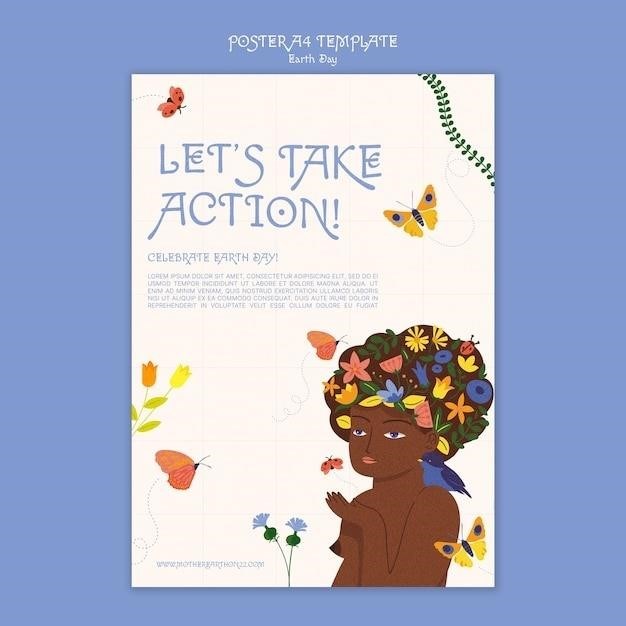maya angelou i rise pdf

maya angelou i rise pdf
Maya Angelou’s “Still I Rise”⁚ A Powerful Anthem of Resilience
Maya Angelou’s “Still I Rise” is a celebrated poem that encapsulates the spirit of resilience‚ strength‚ and hope in the face of adversity. It is a powerful anthem of self-empowerment that has resonated with readers for generations.
The Poem’s Context and Inspiration
“Still I Rise‚” written by Maya Angelou in 1978‚ emerged from a tumultuous period in American history marked by the Civil Rights Movement and ongoing struggles against racism and sexism. Angelou‚ herself a survivor of trauma and discrimination‚ channeled her experiences into this powerful poem. The poem’s genesis lies in her own personal journey of overcoming adversity‚ finding strength in her identity‚ and rising above the negativity directed towards her. Angelou’s words resonate with the experiences of marginalized communities‚ offering a message of hope and defiance that transcends time and circumstance.
The Themes of “Still I Rise”
At its core‚ “Still I Rise” explores the enduring power of the human spirit in the face of oppression and adversity. The poem delves into themes of resilience‚ self-empowerment‚ and hope. It celebrates the strength found within oneself and the ability to rise above challenges‚ regardless of the obstacles placed in one’s path. Angelou’s powerful language and imagery convey a sense of unwavering determination‚ a refusal to be defined by the negativity or prejudice encountered. The poem’s message of hope resonates deeply‚ reminding readers that even in the darkest of times‚ the human spirit can rise above and find a way forward.
Overcoming Oppression and Discrimination
The poem directly addresses the experiences of oppression and discrimination‚ drawing upon Angelou’s own experiences as a Black woman in America. The speaker‚ through powerful metaphors and imagery‚ asserts their defiance against the forces that attempt to hold them down. The lines “You may write me down in history / With your bitter‚ twisted lies‚” illustrate the struggle against prejudice and the attempt to erase one’s identity. The poem’s ultimate message‚ however‚ is one of triumph over adversity‚ a refusal to be silenced or defined by the negativity of others. It speaks to the resilience of the human spirit and the power of individuals to rise above and claim their rightful place in the world.
Self-Empowerment and Inner Strength
At the heart of “Still I Rise” lies a profound message of self-empowerment and the discovery of inner strength. The speaker‚ despite facing prejudice and hardship‚ refuses to be defined by the negativity directed towards them. The repeated phrase “Still I rise” is a powerful declaration of self-worth and an assertion of their inherent value. The poem emphasizes the importance of finding strength within oneself‚ even in the face of external pressures and attempts to diminish one’s worth. The speaker’s unwavering determination to rise above adversity reflects a deep-seated belief in their own power and potential.
Hope and Resilience in the Face of Adversity
The poem’s central theme of resilience is intertwined with a deep sense of hope. The speaker’s unwavering belief in their ability to overcome adversity is rooted in a profound hope for a brighter future. Despite the darkness and pain they have experienced‚ they choose to focus on the possibility of a better tomorrow. The imagery of the sun‚ moon‚ and tides‚ all recurring natural cycles‚ emphasizes the cyclical nature of life and the inevitability of change. This cyclical imagery suggests that even in the darkest moments‚ there is always the potential for renewal and a fresh start. The poem ultimately offers a message of hope and resilience‚ reminding us that even in the face of overwhelming challenges‚ we can find the strength to rise above and create a better future for ourselves.
Analyzing the Poetic Devices
Angelou masterfully employs a variety of poetic devices to enhance the poem’s impact and convey its message of resilience. The poem’s rhythm and repetition are crucial to its effectiveness. The consistent use of anaphora‚ repeating phrases like “You may” and “Still I rise‚” creates a strong sense of determination and defiance. The rhythm of the poem‚ with its alternating lines of four and three syllables‚ contributes to the poem’s powerful cadence and memorable quality. This combination of rhythm and repetition helps to emphasize the speaker’s unwavering resolve and underscores the poem’s message of empowerment.
Metaphor and Symbolism
Angelou employs powerful metaphors and symbolism to convey the speaker’s journey of overcoming oppression. The speaker is likened to “dust‚” signifying her ability to rise above adversity‚ even when seemingly insignificant. The “moons and suns” and the “tides” symbolize the cyclical nature of life and the inevitability of change. The speaker’s rising above oppression is compared to these natural phenomena‚ highlighting the strength and persistence of her spirit. The imagery of “words” and “cuts” represents the harmful impact of prejudice and discrimination‚ while the “gifts” from her ancestors symbolize the legacy of resilience and hope she carries within her.
Imagery and Sensory Details

Angelou’s masterful use of imagery and sensory details immerses the reader in the speaker’s emotional journey. The vivid image of being “trod in the very dirt” evokes a sense of physical and emotional degradation‚ while the speaker’s rising “like dust” suggests a lightness and resilience that defies oppression. The poem’s powerful imagery of “nights of terror and fear” and “a daybreak that’s bound to come” creates a stark contrast between the speaker’s past experiences and her hopeful future. The sensory details of “leaping and wide” and “welling and swelling” create a powerful image of the speaker’s indomitable spirit‚ like a powerful ocean that cannot be contained. These details contribute to the poem’s emotional impact and its enduring message of hope and resilience.
Rhythm and Repetition
The poem’s rhythm and repetition contribute significantly to its impact. The consistent rhythm of the lines‚ often with a strong iambic beat‚ creates a sense of momentum and determination. The repeated refrain “I rise” acts as a powerful mantra‚ emphasizing the speaker’s unwavering resolve. The repetition of the phrase “You may” in the initial stanzas highlights the persistent nature of oppression‚ while the subsequent repetition of “I rise” underscores the speaker’s determination to overcome it. This rhythmic pattern reinforces the poem’s message of defiance and the speaker’s unwavering belief in their own strength and resilience.

The Impact and Legacy of “Still I Rise”
“Still I Rise” has had a profound impact on readers and listeners worldwide. It has become a powerful anthem of resilience‚ inspiring individuals to face adversity with courage and determination. The poem has been widely shared and recited at countless events‚ from graduation ceremonies to political rallies. Its message of hope and self-empowerment transcends racial and cultural boundaries‚ resonating with anyone who has faced challenges and sought strength within themselves. Angelou’s powerful words continue to inspire generations‚ reminding us that even in the face of hardship‚ we have the power to rise above and create a better future.
Where to Find “Still I Rise”
Accessing “Still I Rise” is easy‚ with numerous options available to suit different preferences; Online resources like websites and digital libraries offer convenient access to the poem‚ allowing for immediate reading. Websites like Poetry Foundation and Poetry.com provide the full text of “Still I Rise”‚ along with insightful analyses and background information. Additionally‚ printed collections of Angelou’s works‚ such as “And Still I Rise⁚ A Book of Poems”‚ are readily available at bookstores and libraries‚ offering a tangible and lasting connection to her powerful words. The poem can also be found in various anthologies and educational resources‚ making it accessible for both personal enjoyment and academic study.
Online Resources
The digital age offers a wealth of online resources to access “Still I Rise” with ease. Websites dedicated to poetry‚ such as Poetry Foundation and Poetry.com‚ provide the full text of the poem‚ allowing for immediate reading and exploration. These platforms often include insightful analyses‚ background information on the poem’s context‚ and even audio recordings of Angelou reciting her words. Furthermore‚ digital libraries like Project Gutenberg offer free access to various literary works‚ including “Still I Rise”‚ making it convenient for readers to access and enjoy the poem at their leisure. Other online resources‚ such as educational websites and academic databases‚ may also provide access to “Still I Rise”‚ facilitating research and study for students and enthusiasts alike.
Printed Collections
For those who prefer the tangible experience of holding a book‚ “Still I Rise” is readily available in various printed collections of Maya Angelou’s work. Her most famous collection‚ “And Still I Rise⁚ A Book of Poems‚” published in 1978‚ features the poem alongside other powerful and moving pieces. This collection serves as a comprehensive exploration of Angelou’s poetic voice and her themes of resilience‚ identity‚ and the human spirit. Additionally‚ several anthologies of poetry‚ encompassing diverse voices and styles‚ include “Still I Rise”‚ offering a broader context for appreciating its impact within the literary landscape. These printed collections provide a lasting and physical connection to Angelou’s words‚ allowing readers to cherish and revisit her work for years to come.
“Still I Rise” in Popular Culture
Maya Angelou’s “Still I Rise” has transcended the realm of literature and deeply embedded itself within popular culture. Its powerful message of resilience and self-empowerment has resonated across diverse platforms‚ solidifying its status as a cultural touchstone. The poem has been featured in countless films‚ television shows‚ and music videos‚ often serving as a backdrop for scenes of triumph‚ overcoming adversity‚ and celebrating individuality. Its verses have been sampled in songs‚ inspiring artists to weave Angelou’s words into their musical narratives. “Still I Rise” has also been incorporated into speeches‚ rallies‚ and events advocating for social justice and equality‚ further cementing its place as a powerful symbol of resistance and hope. This widespread adoption in popular culture demonstrates the enduring power of Angelou’s words to inspire and uplift audiences across generations.
The Enduring Power of Maya Angelou’s Words
Maya Angelou’s “Still I Rise” stands as a testament to the enduring power of words to inspire‚ uplift‚ and empower. Its message of resilience and self-affirmation continues to resonate with readers and listeners across cultures and generations. The poem’s widespread adoption in popular culture‚ from film and music to speeches and rallies‚ highlights its lasting impact on society. As we continue to grapple with challenges of oppression and discrimination‚ Angelou’s words offer a beacon of hope and a reminder of our inherent strength and ability to rise above adversity. “Still I Rise” serves as a powerful call to action‚ urging us to embrace our inner resilience and strive for a more just and equitable world.